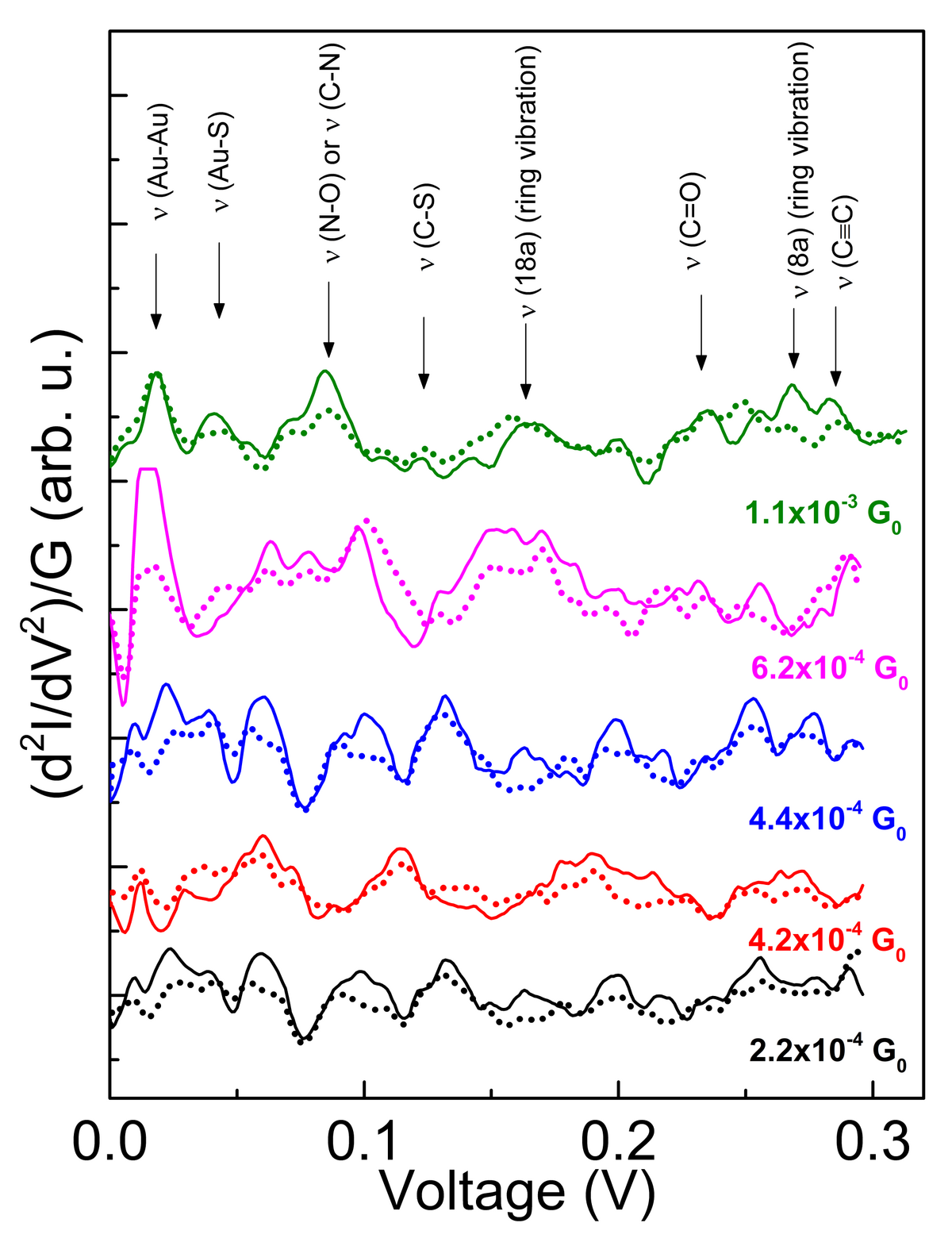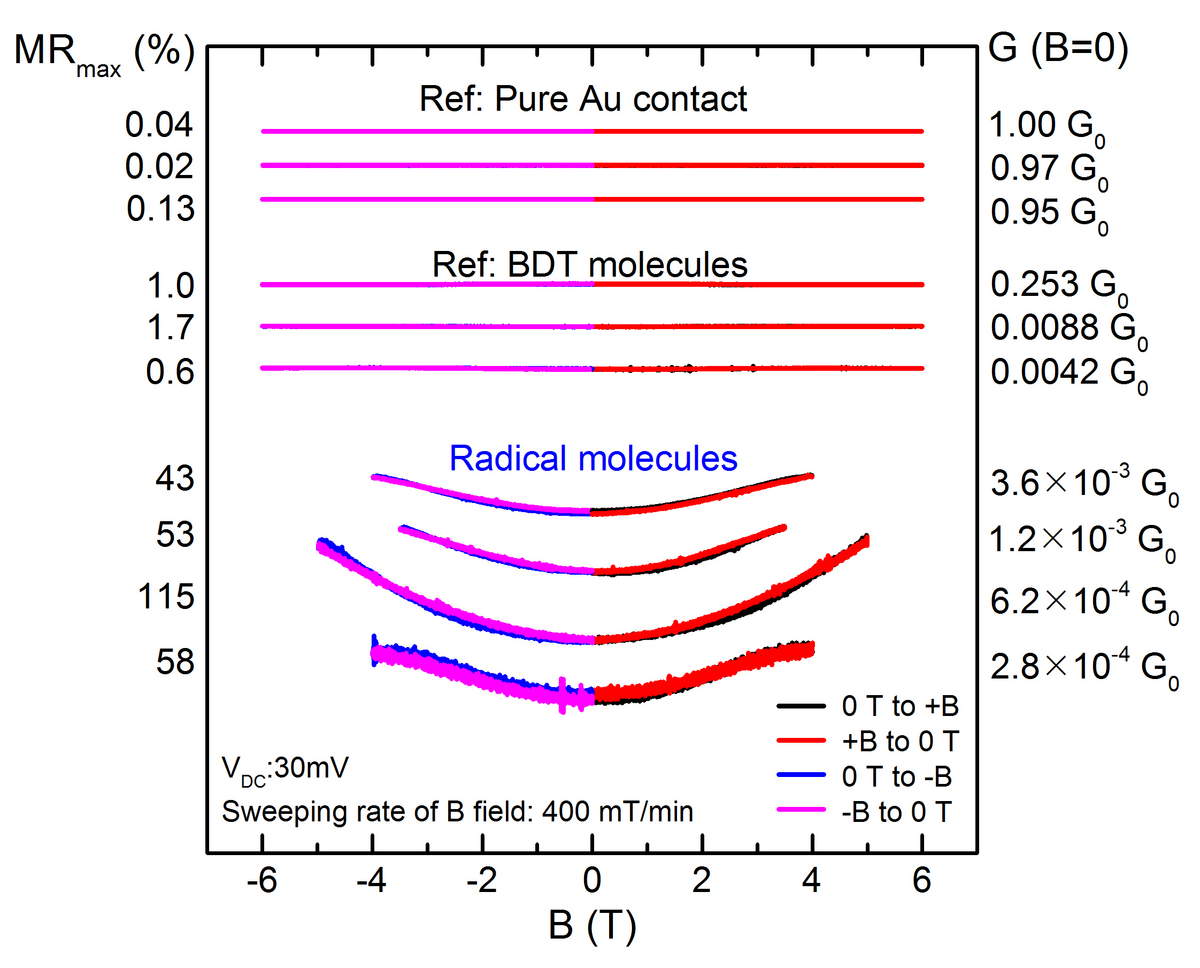
Single-molecules are a very promising candidate for elements of an active electronic device. Until now, the study of charge transport via single-molecules has been successively progressed in nanoscale single-molecule devices. However, there is still not much knowledge about the charge conduction depending on the molecular intrinsic properties. The charge transport through a single-molecule can be modulated by light or microwave irradiations as well as, mechanical forces. To reveal the charge transport mechanism, the inelastic electron tunneling spectroscopy (IETS) technique is used for solid-state single-molecules in mechanically controllable break junctions (MCBJs) at low-temperature (4.2 K) as seen in Fig 1.

Additionally, we take advantage of versatile external stimuli like temperature dependence, current-voltage characteristics and magnetic field dependence. The latter is shown in Fig 2 where we compared the signal of a pure gold contact with a reference molecule (Benzenedithiol) and a magnetically active molecule with a radical group (TEMPO-OPE). The radical molecule shows a large change in conductance with applied magnetic field. This effect could be used to address and control specific molecules later on.
- Ryoma Hayakawa, Mohammad Amin Karimi, Jannic Wolf, Thomas Huhn, Martin Sebastian Zöllner, Carmen Herrmann, Elke Scheer Large Magnetoresistance in Single-Radical Molecular Junctions Nano Lett. 2016, 16, 4960−4967 DOI: 10.1021/acs.nanolett.6b01595
Information
Contributors: Gautam Mitra
Former contributors: Amin Karimi, Ryoma Hayakawa, Sebastian Hambsch, David Weber
External cooperations: C. Herrmann (Uni Hamburg), L. M. Campos (Columbia University New York)
Fundings: SFB 767 Project C2
Period: 2016 - 2018
